Climate Science 101: Earth Carrying Capacity

Hi Folks,
Today, I wanted to talk about the notion of ‘Population and Earth’s carrying capacity’ and why it is so important for us to care about the environment + biodiversity and to be mindful of the current economic growth model. Here is an interesting thought - the Earth does not need us (human beings), but we need her for our existence (unless we can move our cilvilization to the Mars as Elon Musk has been trying :D #IntergalacticSpecies.)
Note) This is my personal view of the world and opinions and not related to my company or any organizations that I am associated with.
I. What is Earth’s carrying capacity and why should we care?
This is US, our home - the Earth - orbiting around the Sun in the galaxy called the Milky Way.
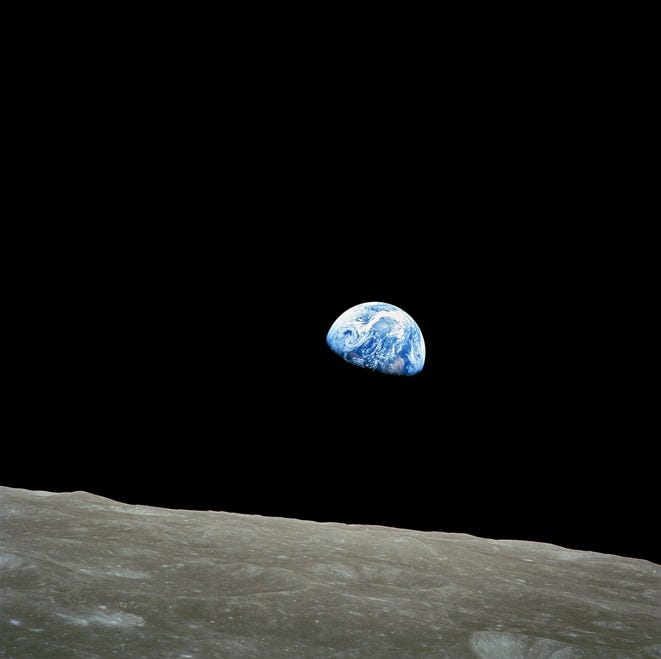
To put this into context, this is Laniakea Supercluster, which is the galaxy supercluster that is home to the Milky Way and approximately 100,000 other nearby galaxies. Laniakea means ‘immense heaven’ in Hawaiian.
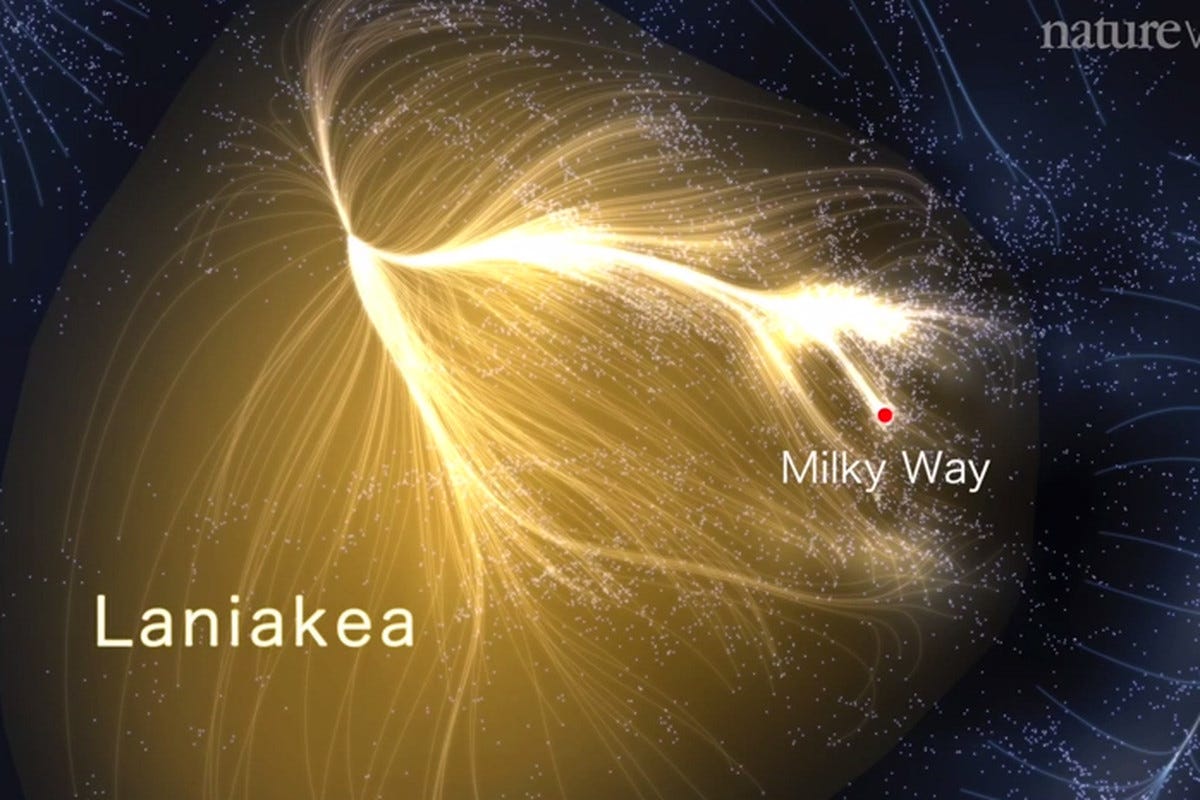
Zooming out to the broader universe…(doesn’t it look like a neuron?)
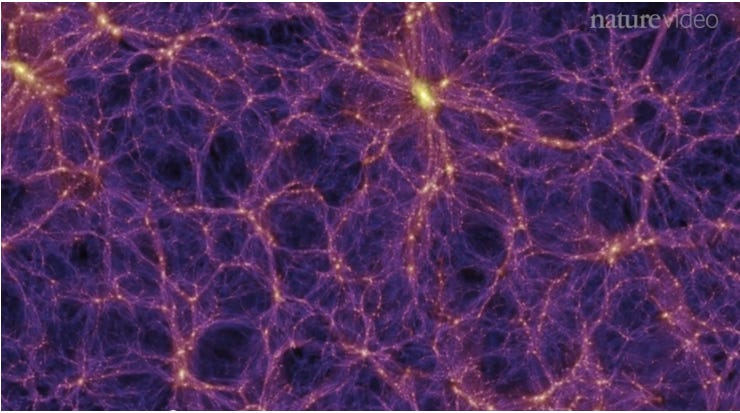
(Source: Nature video, based on Tully et al 2014 , Vox - this is the most detailed map yet of our place in the universe, Feb 11, 2015)
Sorry, I got carried away with the space stuff. Anyways, the point being, Earth is 4.5 billion years old, and human beings as a species are a relatively new addition to the Earth’s surface population and ecosystem.
Mathew Hampshire-Waugh explains this perfectly in his book synopsis. “If the history of the Earth were condensed into the 24 hours of one day, the story of modern humans would start just around 0.2 seconds before midnight, or 12,000 years ago. At this moment in time, concentrations of carbon (CO2) in the atmosphere stabilized at just below 300 parts per million (ppm) and average temperatures on Earth settled at a comfortable 14⁰C.”
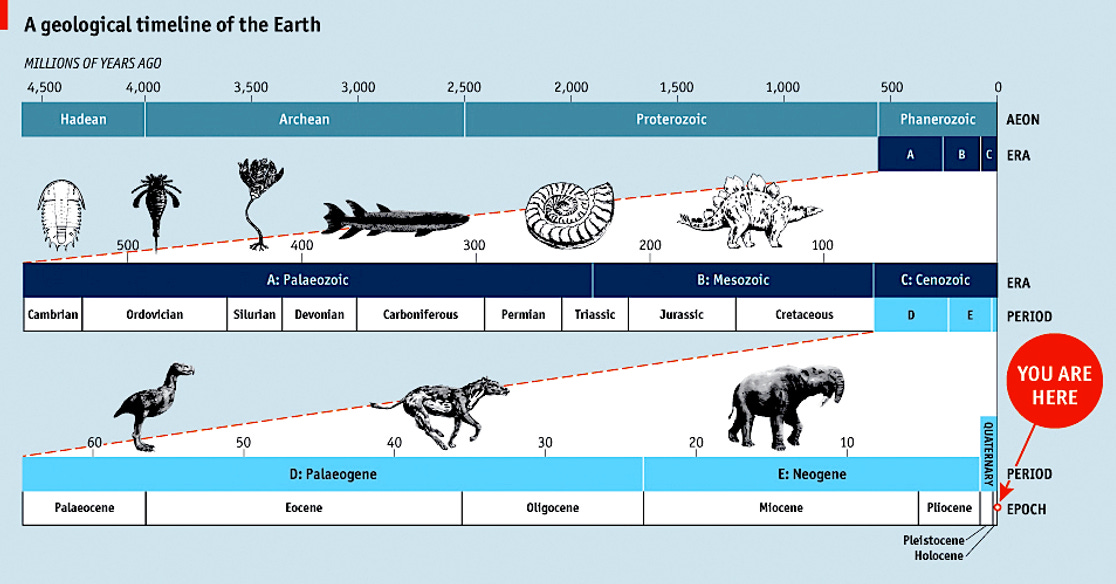
(Source: Earth’s geological timeline (imgarcade.com, The Economist.com)
Yet, it wasn’t until the industrial revolution that human beings made irreversible damages to the Earth.
Human’s impact on Earth can be summarized into a function of three things: 1)Population number, 2) what we consume (food, goods and services), and 3) how we consume it. (meaning the energy we produce along the way which is the basis of our productivity and economic growth)
‘Humanity’s impact on Earth = population + consumption + production (energy)’
As you can see in this chart below that depicts the history of human population growth, there is a spike highlighted with a red box. The human population has grown 10 times since the industrial revolution. We had about 800-900 million people in the 19th century, and today, about 8 billion people. 8 billion people are a lot of people to feed. And Malthusian theory warns us our linear food production will not be able to keep up with exponential population growth, resulting in disease, famine, and war. The pandemic is certainly one of the results.
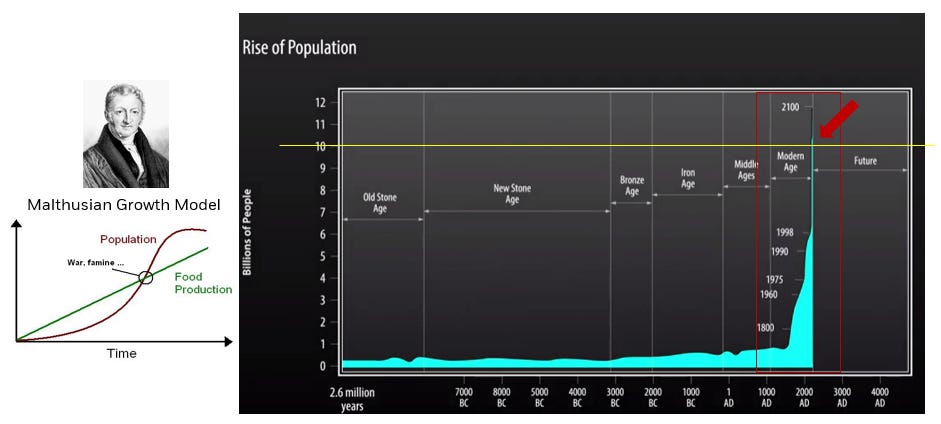
(Source: “Population: A lively Introduction.” Joseph A. McFall, Jr. Population Bulletin, Volume 46, Number 2, October 1991, pages 1-43, Population Reference bureau, Washington, D.C.)
And in fact, scientists are saying there is a concept of planetary boundary. It is also known as the Earth’s carrying capacity. It is the maximum number of individuals in a species that an environment can support for the long term. You can think of this as a max capacity of an elevator (e.g. 10 people). Just like that, scientists are saying the Earth’s natural carrying capacity is around 10 billion people and scientists predict, at this birth rate, we will reach 10 billion by the end of 2100. Some people even go far to say that human population can dwindle, because Earth resources cannot simply take the strain that we are putting on now.
Because our population number has exploded during the industrial revolution which also exponentially increased the energy production mainly fueled by ‘coal’, we are near the inflection point where the Earth’s natural carrying capacity is being maxed out.
According to Oxford University, 84% of our energy is still fueled by carbon generating sources such as coal, oil and natural gas. They have been the basis on which the modern world and modern convenience have been built.


The problem is, right now fossil fuels are not our best friends because when coal, oil, or gas is burned the carbon that is the basis of those fossil fuels combines with oxygen in the air and produces CO2, carbon dioxide, which is emitted into the air, which is the main greenhouse gas, warming the planet, changing the climate, and endangering humanity and other species.
And that’s why we keep hearing that we have to go net zero meaning reducing nearly all human-caused emissions and balancing out remaining emissions to achieve the well below 2 degree above pre-industrial levels per Paris agreement. Many countries and companies are now committing to net zero target by 2050 or 2030 to avoid catastrophic outcomes from climate change. More on this in the next edition.
![Sustainable/Impact Investing] First Principles Thinking for Sustainable/Impact Investing: Rebuilding the Stack from the Atoms Up](/content/images/size/w720/2026/01/1_9Kg0XkVUpLJ_5qLrGto5hA.webp)
![Obsidian Impact Playbook — Issue #1] 2026 Energy Transition Capital Allocation (Private Markets): Where Returns Are and How to Underwrite Them](https://images.unsplash.com/photo-1608447714925-599deeb5a682?crop=entropy&cs=tinysrgb&fit=max&fm=jpg&ixid=M3wxMTc3M3wwfDF8c2VhcmNofDR8fGJsYWNrfGVufDB8fHx8MTc2NzU1NjE2NHww&ixlib=rb-4.1.0&q=80&w=720)
![Sustainable/Impact Investing] Regulations Cheatsheet - State of Play (December 2025)](/content/images/size/w720/2025/12/Screenshot-2025-12-08-073043.png)